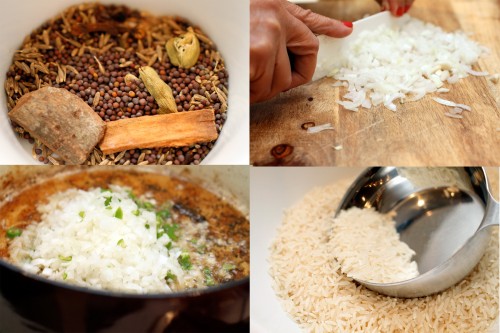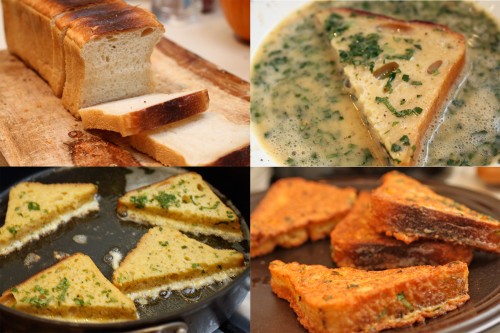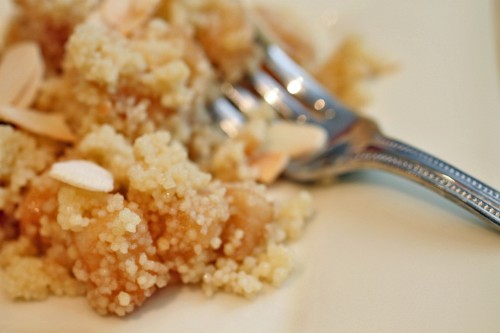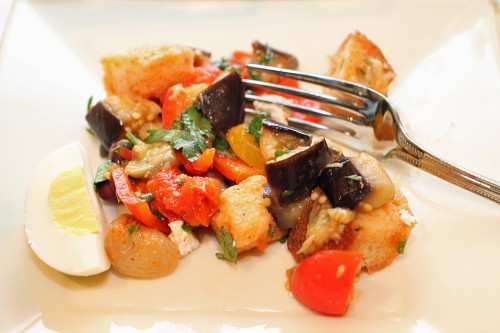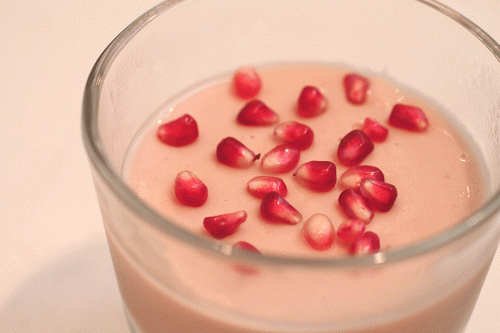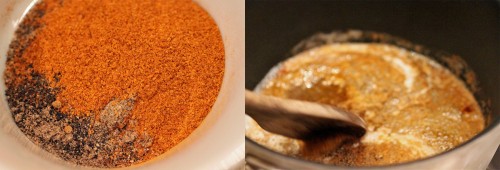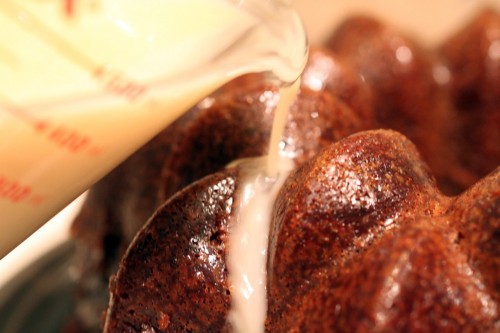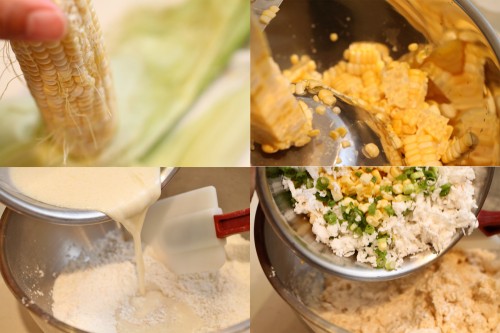Sumptuous Beef & Rice Casserole w/ Raw Mango Salad
The first time my mom made my husband pilau we were having a party at my place in NYC. There were around 25 people over, celebrating, drinking wine and eating standing up because I didn’t have enough chairs for everyone. The layout of my apartment is pretty open with the kitchen, dining, and living rooms all visible. No joke, at the end of his 4th helping of the dish, my husband stood up abruptly, pronounced my mom had purposefully “roofied” him…and promptly went to sleep on the couch in front of the other 20-some-odd people!
In the spirit of dishes that work well for the holidays, I thought I would put this recipe out since it’s a delicious communal or even potluck dish. Hanging with my parents this weekend meant my mom and I were seriously throwing down in the kitchen, and pilau was definitely on the menu. Typically, there’s so much “a little of this, a little of that” that it’s pretty close to impossible to get a solid recipe out of the whole affair. But I managed to pry this one out. And even with this dish, it takes a bit of intuition and a little praying to get the beef and the rice to be cooked perfectly at the same time. But it is so worth it. For me, it’s old school comfort food, a taste memory that dates back to my early childhood.
I did a little research, and pilau = pilaf which is actually Turkish! And this is extraordinarily exciting for me because I am planning a trip to Turkey later this year. Cannot wait to cook their version…Much like another rice casserole I’ve mentioned, biryani, this dish originated in Persia and can be found throughout the world, taking its individual form in different cultures. Afghani palau has carrots, raisins, and nuts; in parts of East Africa, coconut milk is included. And West Indian pelau is closer to their peas and rice with the inclusion of chicken or another protein.
This version is a true combination of my mom and I. The ingredients are largely hers, but I changed the technique to try to create the best textures and flavors possible. I made a raw mango salad to go along with it, which provides the perfect cool and acidic balance to the warmly spiced rice and beef that melts in your mouth. Enjoy!
Ingredients
Yields 6 to 8 servings
Pilau:
2 lbs beef chuck, cut into 1 ½ inch cubes
5 tbsps canola oil
1 stick of cinnamon
3 whole cloves
3 whole black peppercorns
3 whole cardamom pods, cracked open
1 ½ tsps cumin seeds
2 tsps black mustard seeds
1 large yellow onion, finely chopped
1-3 green chilies, finely chopped
½ tsp grated ginger
½ tsp of ground cumin
¼ tsp of ground coriander
4 cloves of garlic, minced
1 ½ bunches of fresh cilantro, chopped (including stems)
1 marrow bone (totally optional, I added it for extra flavor)
4 ½ cups light beef stock or beef stock + water
3 ½ cups of basmati rice
Salt and pepper to taste
Raw Mango Salad:
juice of 1 lime
2 ½ tsps rice wine vinegar
½ tsp salt
¼ tsp cayenne
1 raw mango, peeled, seeded and diced
1 cucumber, peeled, seeded and diced
1 apple, peeled, seeded and diced
½ red onion, minced
2 small sweet red peppers, minced
4 to 6 mint leaves, chiffonade
small handful of cilantro, finely chopped
Procedure
For the Pilau:
Preheat the oven to 325° F.
Thoroughly wash the basmati rice until the water runs clear. You want to remove as much starch as possible. Set aside.
Heat a large Dutch oven over high heat. Liberally season the cubed beef. Add oil to the pot and sauté beef for 2 to 3 minutes in batches. You don’t want to overcrowd the pot or the meat won’t brown. Also, you don’t want to cook the beef all the way through – just enough to brown the outside. Using a slotted spoon, spoon beef onto an unlined plate and set aside.
Turn the heat down slightly to a medium heat and add all of the whole spices. When they start to pop, add onions, chilies, ginger, ground cumin and ground coriander and cook for 6 to 8 minutes. Lower the heat if necessary – you want the onions to turn translucent but not brown. Add the garlic and ½ of the chopped cilantro and cook for another minute. Add beef back to the pot along with any juices that have accumulated on the plate and the marrow bone if using.
This is where it gets slightly tricky. Pre-measure the 4 ½ cups of liquid – you can use a light stock, water or some combination of the two. You want to keep track of how much liquid you’ve added because the rice will become sticky if you end up adding too much and will be dry if not enough is used. Add liquid to the pot to just cover the meat. Place the lid on the pot, and turn the heat up. When the temperature comes up and it’s about to boil, place covered pot in the oven and cook for about 1 ½ hours or until the meat is fork tender.
Once meat is cooked, add rice and the remaining liquid to get to 4 ½ cups. Re-season if necessary and place back in the oven for another 30 to 35 minutes until rice is cooked and fluffy. Rice may take a little less or more time depending on the type of rice you are using, type of pot in which you are cooking, etc., so I would advise checking it at intervals.
When serving, use the other half of the chopped cilantro to garnish the top.
For the Raw Mango Salad:
Combine lime juice, rice wine vinegar, cayenne and salt in a small bowl to create a dressing.
In a separate bowl, toss together raw mango, cucumber, apple, red onion, sweet red pepper, mint and cilantro. Add dressing and adjust seasoning if necessary.









